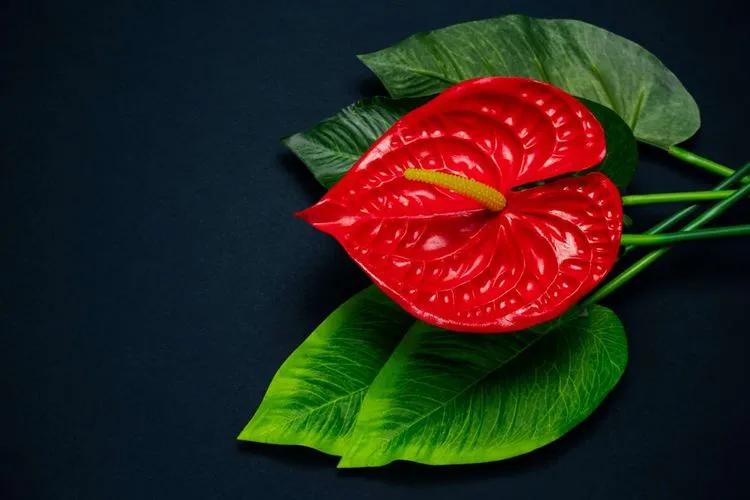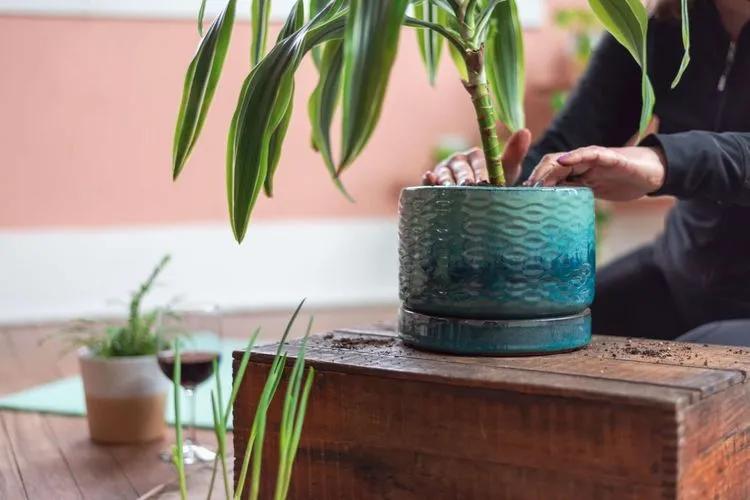 We know how sad you feel when your desired plant does not bloom for months (or even years). Don’t worry - you can still help it and encourage growth. Houseplants can stop blooming for various reasons, but, as a rule, the set of these reasons is common. Accordingly, the algorithm for further actions to eliminate the problem is identical in most cases.
We know how sad you feel when your desired plant does not bloom for months (or even years). Don’t worry - you can still help it and encourage growth. Houseplants can stop blooming for various reasons, but, as a rule, the set of these reasons is common. Accordingly, the algorithm for further actions to eliminate the problem is identical in most cases.
The flower is overfed
Manufacturers often overfeed the plants with stimulants - simply to sell you a plant covered with flowers. As a rule, flowering stimulants are not widely sold - therefore, you are unlikely to succeed in repeating the trick with lush flowering, and you do not need to. The fact is that after a period of active flowering, especially if stimulated by special preparations, the plant weakens. It takes a long time for it to bounce back. Which, of course, will not happen if you try to re-stimulate the flower. In this situation, you need to give the plant a rest, if necessary, in the spring, transplant it into new soil and take care of it, observing the conditions it needs.
The plant is dormant
 This blooming period usually falls during the cold season. In winter, most plants do not bloom, they do not grow leaves or shoots. During this time, flower growers traditionally reduce watering and various types of processing. Of course, there are exceptions among the plants that can bloom in winter - some types of Orchids, Schumberger (Decembrist), Amaryllis and Hippeastrum, Cyclamen, Azalea. If they do not bloom or suddenly drop their buds, then you are violating the conditions of care (in most cases). The main thing you should do at this stage is not to interfere with their rest. A new stage of growth and flowering awaits them in the next season.
This blooming period usually falls during the cold season. In winter, most plants do not bloom, they do not grow leaves or shoots. During this time, flower growers traditionally reduce watering and various types of processing. Of course, there are exceptions among the plants that can bloom in winter - some types of Orchids, Schumberger (Decembrist), Amaryllis and Hippeastrum, Cyclamen, Azalea. If they do not bloom or suddenly drop their buds, then you are violating the conditions of care (in most cases). The main thing you should do at this stage is not to interfere with their rest. A new stage of growth and flowering awaits them in the next season.
The plant does not have enough feed
The lack of any type of care (or its surplus) directly affects the process of plant development and the process of its flowering. If your flowers lack the necessary substances, this makes sense. Another matter is if they are overfed. In particular, some novice growers literally "fill" the plant with nitrogen fertilizers necessary for growth, but at the same time they forget about phosphorus and potassium dressings, which are needed just for the flowering to begin. Everything is good in moderation - this is the main thing to remember when choosing fertilizers for indoor plants. Always read the instructions attached to them carefully.
The plant was sprayed incorrectly
If you keep your flowers in the room with dry air, do not forget to spray them with water. However, if this spraying is done incorrectly, some plants may shed their buds (for example, a Chinese rose or Begonia). The secret is simple: during standard spraying with water, as well as foliar feeding or processing flowers against diseases and pests using a spray bottle, try not to get on the buds or completely isolate them from the liquid. When humidifying the air, you can spray water indoors, near the flower, but not on it. Also, check the axils of the leaves: water should not stagnate there, because this provokes rotting of the plant and thereby indirectly affects its flowering.
The plant was recently transplanted or pruned
After such procedures, flowers need a lot of time to adapt, and therefore they will have to wait a very long time for re-flowering. However, each plant has its own adaptation period, and sometimes you can even stimulate the flowering of some of them by transplanting (Phalaenopsis). The main thing is not to transplant the plants directly during their flowering.
If you constantly form a bush by cutting off the shoots of the plant, then you are depriving it of several areas at once where flowering could begin.
The soil or pot is not suitable for the plant
 Each plant needs a specific soil composition of suitable acidity. For example, among flowering plants, gardenia and camellia love acidic soil, slightly acidic - Fuchsia, Anthurium, Jasmine, Spathiphyllum, alkaline - Adenium, neutral - Aphelandra, Pelargonium, Rose and others. Over time, any, even ordinary soil, in conditions of indoor maintenance and home care of plants, begins to change its properties due to applied fertilizers or hard water. That is why each plant needs to change the soil at least once every two years, and renew it annually - in the spring. Particularly caring owners additionally measure the acidity of the soil in which their flowers grow.
Each plant needs a specific soil composition of suitable acidity. For example, among flowering plants, gardenia and camellia love acidic soil, slightly acidic - Fuchsia, Anthurium, Jasmine, Spathiphyllum, alkaline - Adenium, neutral - Aphelandra, Pelargonium, Rose and others. Over time, any, even ordinary soil, in conditions of indoor maintenance and home care of plants, begins to change its properties due to applied fertilizers or hard water. That is why each plant needs to change the soil at least once every two years, and renew it annually - in the spring. Particularly caring owners additionally measure the acidity of the soil in which their flowers grow.
Concerning the pot: when transplanting, it is recommended to choose a pot with diameter being only 2-6 cm larger than the previous one (depending on how much time has passed since the last transplant and how the plant has grown during this period). The main condition is that after transplanting a plant into a new pot, its roots should be placed there freely, maintaining a certain distance to the walls of the container. This distance should not be too large - otherwise the roots of the flower can grow, and it will spend the bulk of the reserves on their development, and not on flowering.
The plant is sick
Obviously, a houseplant infected with diseases and pests, will not bloom. This is one of the main reasons why it suddenly changed its mind to bloom and dropped all the buds. In this situation, the flower needs appropriate treatment, and in case of severe damage, it also needs rinsing the roots and emergency transplantation. Wait a while for flowering.
The plant doesn't like indoor air
Too high humidity or, conversely, dry air, as well as constant drafts, interfere with the normal development of the plant. You can control the humidity of the air by spraying, but if the plant suffers from air currents, then it must be rearranged to another place that is suitable for full development (devoid of drafts).
